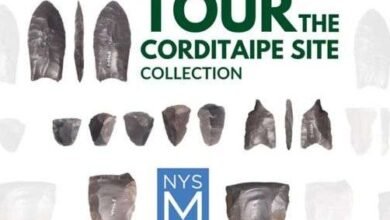DEC Announces New Plan For ‘Trailless’ Catskill High Peaks


 New York State Department of Environmental Conservation (DEC) has announced the release of the “Draft Visitor Use Management Plan for the Formerly Trailless Catskill High Peaks.”
New York State Department of Environmental Conservation (DEC) has announced the release of the “Draft Visitor Use Management Plan for the Formerly Trailless Catskill High Peaks.”
The plan outlines sustainable management strategies for the Catskills to protect ecologically sensitive high-elevation peaks in the Forest Preserve that have historically been managed to be free of trails and other recreational facilities.
The plan would impact areas of the Slide Mountain Wilderness, Big Indian Wilderness, Hunter West-Kill Wilderness, Halcott Mountain Wild Forest, Rusk Mountain Wild Forest, Kaaterskill Wild Forest, and Bearpen Mountain State Forest.
“While the Catskills have long provided a wild and scenic escape for hikers, an ongoing increase in use of herd paths and other informal trails is damaging sensitive ecosystems,” DEC Commissioner Amanda Lefton said in an announcement sent to the press.
“By proactively engaging in Visitor Use Management in highly visited locations, DEC is protecting natural resources while maximizing the public’s experience in and appreciation of the Catskills. DEC encourages feedback on the draft plan to help continue balancing long-term conservation goals with safe and sustainable public access.”

 A surge in user-created, informal trails is threatening fragile ecosystems and resulting in soil compaction, increased erosion, and damage to vegetation and wildlife habitat.
A surge in user-created, informal trails is threatening fragile ecosystems and resulting in soil compaction, increased erosion, and damage to vegetation and wildlife habitat.
Informal trails can also adversely impact the landscape through forest fragmentation and the introduction of invasive species into interior forest habitats.
These types of unplanned trail networks in high-elevation areas are especially harmful to the breeding behavior and nesting success of migratory, ground-nesting mountain birds that rely on these peaks for critical habitat.
Since 2019, DEC has collected data to better understand the distribution of visitor-created, informal trails on 16 peaks over 3,500 feet that were historically managed as “trailless” areas.
The draft Visitor Use Management Plan for the Formerly Trailless Catskill High Peaks shares findings from DEC’s research and provides recommendations to address the impacts.
The draft VUM Plan, available on DEC’s website, helps identify desired conditions for visitor experiences, natural resource protection, facilities development, and recreational opportunities.
The draft plan helps fulfill a recommendation from the Catskill Strategic Planning Advisory Group to adopt the federal Interagency Visitor Use Management Framework (VUMF) as a core management tool throughout the Catskill Park.

 Upon final adoption of the Visitor Use Management Plan, DEC land managers are expected to address the fragmentation created by informal trails by using official trail markers to indicate a single, preferred route to the summit of each formerly trailless peak. DEC says measures will also be taken to close and rehabilitate the remaining undesirable trails.
Upon final adoption of the Visitor Use Management Plan, DEC land managers are expected to address the fragmentation created by informal trails by using official trail markers to indicate a single, preferred route to the summit of each formerly trailless peak. DEC says measures will also be taken to close and rehabilitate the remaining undesirable trails.
“Over time, the success of these actions will be monitored and if impacts continue, or if rehabilitation measures prove to be unsuccessful, new sustainable trails will be professionally designed and built to properly guide the public to each summit in a manner that allows the previously impacted areas to heal and provides a safer hiking experience for the public,” the DEC announcement says.
To learn more about monitoring efforts and to see previous reports documenting the adverse impacts of informal trails on the Catskill High Peaks, visit DEC’s website.
DEC will hold a virtual public meeting on August 6, 2025, at 6 pm. The public is encouraged to share their comments and provide input on the on the Draft VUM Plan during the virtual public information meeting. To participate, visit the meeting page for details.
The VUM plan is available for public comment through Monday, September 15th, by sending comments to catskillpark@dec.ny.gov or by mail to Pine Roehrs, NYSDEC, 21 South Putt Corners Road, New Paltz, NY 12561.
Read more about hiking in New York State.
Illustrations, from above provided by DEC: A map of the “trailless” Catskill Peaks; STRAVA heat map image of Rocky Mountain, an unmarked “trailless peak” in the Catskills, showing visitor-created, informal trails significantly fragmenting the landscape; a STRAVA heat map image of a high use marked trail in the Slide Mountain Wilderness.
Source link




